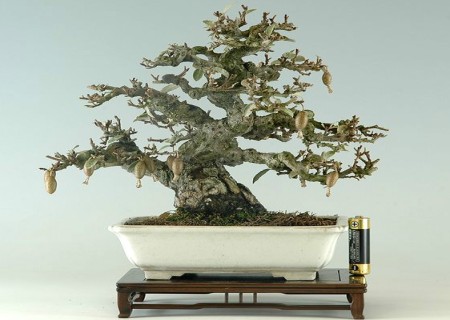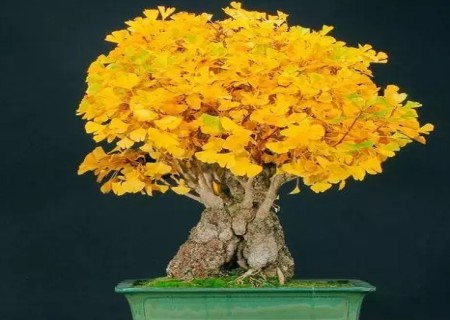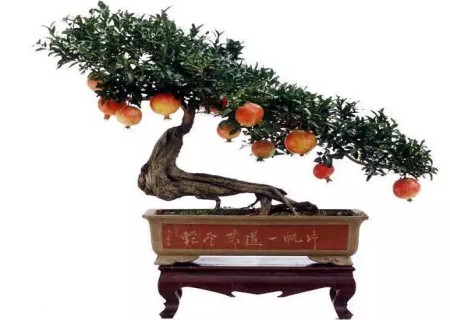Production technology of Elaeagnus angustifolia bonsai
Elaeagnus mandshurica has a natural tree shape and a drooping red fruit. In addition to hedges made into natural forms on the grasslands, forest edges and the periphery of trees, we can also make them into bonsai for appreciation. However, potted Elaeagnus mandshurica is generally not easy to bear fruit, which is related to the breeding time of the selected species. Although Elaeagnus is not easy to bear fruit, it can blossom, and it is very beautiful. Isn't it just for appreciation that we make it into a bonsai? It is precisely because the beauty of Elaeagnus mandshurica flowers all over the branches makes people eager to appreciate it.

Next, the editor will introduce the production technology of Elaeagnus mandshurica bonsai, hoping to give some help and inspiration to friends who like it.
1. The process of selecting materials
When we make Elaeagnus angustifolia bonsai, the material can be obtained by artificial breeding and mountain mining. Artificial breeding is mainly through sowing and cutting, but this process is relatively long. Since we can dig through the mountains, why don't we use ready-made material? And wild Elaeagnus mandshurica old pile shape is simple, strong roots, is the best material for bonsai production.
The excavation of the old pile of Elaeagnus is usually carried out at the end of winter or early spring. When digging, cut off the overlong main root and be careful not to hurt the lateral root and fibrous root. In addition, the branches should also be cut deeply, leaving only the branches that can be modeled.
2. The process of raising embryos
After dealing with the old pile, we first cultivate it on the ground. when planting, we should pay attention to tamping the soil and make the soil as high as possible. After planting, water thoroughly and cover the branches with some dry weeds. Spray water-3 times a day to keep the soil around the plant moist. Especially in summer, shading measures must be taken. I believe that after carefully raising the embryo, it will surely flourish in the coming year, and then it will be able to be carefully shaped in the pot.
3. The process of potting.
The potting process of Elaeagnus chinensis needs to go through three steps: basin selection, soil allocation and transplantation. Next, let's take a look at these three links.
1) choose a bowl: before going into the basin, we must choose the best bowl for Elaeagnus. According to the growth characteristics of Elaeagnus, it is suitable to choose glazed pottery basin or purple sand pottery basin. Of course, the shape of the basin is determined according to the old pile of Elaeagnus, and it is appropriate to choose an oval or rectangular bowl. The best color is light yellow, because if the fruit of Elaeagnus mandshurica is red, coupled with the contrast of green leaves, the bonsai will look more pleasing to the eye.
2) prepare soil: after selecting the basin, you need to make bonsai soil. In fact, Elaeagnus is more poverty-tolerant, the requirements of the soil is not very strict. Usually we use pastoral soil + river pond soil + sand soil or rice chaff ash to mix evenly according to a certain proportion. Of course, we can also use humus soil alone for cultivation.
3) transplanting cultivation: the potting time of Elaeagnus chinensis is usually completed before the plant germinates from March to April every spring. Of course, not only in this period of time, in fact, autumn is also possible, but it is easier to survive in spring. Before implanting Elaeagnus angustifolia, we need to trim the roots of Elaeagnus angustifolia and tamp other roots with soil. When planting, the bottom of the pot does not need to be covered with soil like other plants. Elaeagnus angustifolia needs to empty the bottom of the basin, water it once after planting the plant, and keep it in a cool place to protect it from sunlight. Wait for half a month before it can be exposed to sunlight.
4. Modeling process
After the old pile of Elaeagnus is cultivated, it will be carefully maintained and managed for a period of time. It can be styled when the roots grow back to be stout and the new branches become strong.
1) first of all, we have to process the whole tree, which can be carried out by the combination of climbing and pruning, and metal wire or brown wire can be used when climbing. Of course, the whole process needs to be carried out before flowering, the main branches can be simply climbed, and the small branches can be pruned.
2) after simple processing, we can model it in detail. The modeling methods that can be used are straight dry type, oblique dry type, qu dry type and so on, so that the bonsai produced in this way is more elegant and more simple, vigorous and powerful.
5. Maintenance process
In addition to choosing an ideal place for the maintenance and management of Elaeagnus, it is nothing more than water and fertilizer management, pruning and turning the basin. Normal growth of Elaeagnus angustifolia bonsai should be placed in sunny, well-ventilated places, such as balconies. Summer appropriate shade on the line, winter can also be placed outside, because Elaeagnus itself is more hardy.
For water and fertilizer management, in addition to watering according to normal plant management, organic fertilizer can be applied once a month in spring and phosphorus and potassium fertilizer once a month in autumn. After that, it can be pruned properly according to the growth of the plant, and the basin can be turned every 3-4 years, and the time should be picked in early spring or autumn.
In addition, we should also do a good job in daily pest protection.
Time: 2019-05-26 Click:
- Prev

How to make ginkgo bonsai
Summer has come, ginkgo biloba presents a green, with a high ornamental value, so ancient and modern Chinese and foreign people often use ginkgo in the courtyard, street trees or landscaping. However, what the editor wants to tell you today is that ginkgo biloba leaves can be made into bonsai.
- Next

Production technology of pomegranate bonsai
Pomegranate bonsai has high ornamental value and broad market prospects, which attracts the attention of the world with its rugged appearance. Pomegranate bonsai can be made into ornamental forms such as fruit, branches, leaves, flowers and so on. Its trunk is vigorous, simple and dignified as a whole, and its flowers are beautiful and the fruits are delicious, so it is deeply loved by the majority of potted friends. that
Related
- Fuxing push coffee new agricultural production and marketing class: lack of small-scale processing plants
- Jujube rice field leisure farm deep ploughing Yilan for five years to create a space for organic food and play
- Nongyu Farm-A trial of organic papaya for brave women with advanced technology
- Four points for attention in the prevention and control of diseases and insect pests of edible fungi
- How to add nutrient solution to Edible Fungi
- Is there any good way to control edible fungus mites?
- Open Inoculation Technology of Edible Fungi
- Is there any clever way to use fertilizer for edible fungus in winter?
- What agents are used to kill the pathogens of edible fungi in the mushroom shed?
- Rapid drying of Edible Fungi

